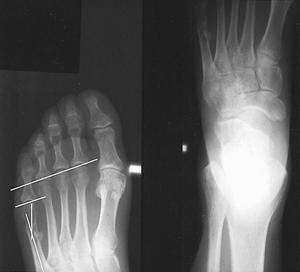

- #Cpt orif 5th metatarsal fracture full#
- #Cpt orif 5th metatarsal fracture verification#
- #Cpt orif 5th metatarsal fracture series#
There was full active extension of the involved digits. All patients returned to their activities of daily living and original occupation without any significant problems.Īt the end of the follow-up period, no signs of inflammation or aseptic effusion were found around the metacarpal head. The fractures achieved clinical and radiological union within 7–9 weeks with a mean of 7.6 ± 0.9 weeks. The patients were followed up for 3–5 months with a mean of 4.2 ± 0.8 months. Right 4 th and 5 th MC shaft linear fractures with shortening and angulation deformity Right 4 th and 5 th MC shaft linear fractures with angulation deformity Right 5 th MC shaft linear fractures with angulation deformityĭirect blow onto the metacarpus from a heavy object contralateral hand)ĭirect blow with clenched fist against a solid surface
#Cpt orif 5th metatarsal fracture verification#
After the intraoperative fluoroscopy verification and clinical examination to make sure that rotational deformity had been corrected, the rod handle was cut off to leave only 2 mm outside the metacarpus. With the absorbable rod settled in firmly, the finger was flexed and extended passively to check the stability of the fixation and digital alignment. After the fracture was reduced anatomically and stabilized using a combination of the Jahss maneuver and open reduction with bone reduction forceps, a self-reinforced poly-L-lactide (SR-PLLA) absorbable rod (Biofix, Conmed Linvatec Biomaterial Ltd., Finland) with a diameter of 2 mm was inserted through the hole at the metacarpal neck in a retrograde direction. Using a 2 mm drill, a hole was made on the lateral side of the metacarpal neck, just proximal to the metacarpophalangeal joint (MPJ) capsule with 30° of angulation with the long axis of the metacarpus. The medullary canal was expanded with a 2 mm K-wire. The hematoma and fibrous tissue at the fracture sites were removed. The cutaneous nerves and extensors were visualized, retracted, and protected. Under brachial plexus block anesthesia, the patient was supine on the operating table with the injured limb place on an arm board, then a longitudinal or curved incision was made at the dorsal side of the fourth and/or fifth metacarpal shaft(s). Preoperative – (a) Posteroanterior and (b) lateral radiographs of a patient's right hand, demonstrating that there were the shaft fractures of the fourth and fifth metacarpi with dorsal angulation.

#Cpt orif 5th metatarsal fracture series#
We undertook a descriptive case series of patients who sustained fourth and/or fifth metacarpal shaft fractures and underwent fixation with bioabsorbable intramedullary rods and investigated their clinical outcomes including bone union time, range of motion (ROM) for the involved fingers, grip strength, as well as the potential implications for the bioabsorbable implants. To avoid the irritation of tendons and soft tissues as well as hardware-related problems, we designed an intramedullary fixation with bioabsorbable rods for the treatment of the metacarpal shaft fractures. Compared with conventional hardware, bioabsorbable implants are thought to provide gradual load transfer to the healing tissue, reduced need for hardware removal and radiolucency, which facilitates postoperative radiological evaluation. With open reduction and internal fixation, the hardware may need to be removed at a later date, especially if the patient complains of hardware-related pain.īioabsorbable implants are being used with increasing frequency in the treatment of small bone fractures or fractures involving the joint surface.

However, even with K-wires, there can still be hardware-associated complications such as wire track infection, soft tissue irritation, and tendon adhesion or rupture. The benefit of the plate and screws fixation is that it provides an extremely rigid fixation while the K-wire fixation is the least invasive method. Although some of these fractures can be treated conservatively, grossly displaced and comminuted fractures should be surgically corrected either with closed reduction and stabilization with percutaneous Kirschner wires (K-wires) or open reduction internal fixation with plate and screws. In these fractures, angulation deformity is frequently found. Fourth and fifth metacarpal shaft fractures are one of the most common hand injuries encountered in clinical practice.


 0 kommentar(er)
0 kommentar(er)
